Ride Concepts Wildcat Shoe
Test Locations: Crested Butte, CO
Test Duration: 3.5 months
Reviewers:
Kara Williard: 5’9”, 167 lbs / 175 cm, 75.7 kg
Size Tested: US Women’s 9
Blister’s Measured Weight per shoe: 370 and 375 g
Upper: Microfiber synthetic
Closure: Lace + Velcro Strap
- EVA midsole provides support and shock absorption
- Dual-density EVA insole provides additional support and cushion
- Microfiber synthetic upper is abrasion and weather resistant
- Anti-bacterial mesh lining controls odor
- Fully gusseted tongue prohibits intake of dirt and debris
- Hook and loop strap for additional foot retention Elastic lace tuck to keep laces secure
- Abrasion-resistant TPU toe and heel with internal toe protection
- Midtop construction for added ankle protection
- Heel pull tab for easy entry
- MAX GRIP rubber outsole
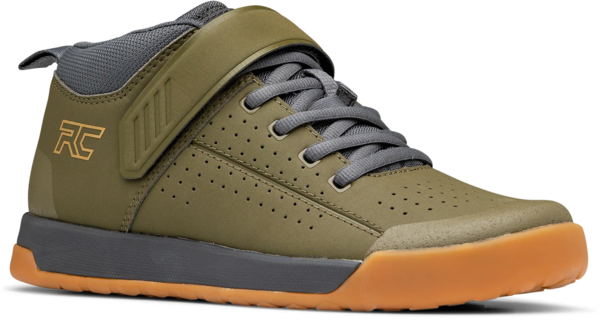
Pedals used: Crank Brothers Stamp 7 — Large; Spank Spike Reboot Pedal
MSRP: $140
Intro
The Ride Concepts Wildcat is a versatile, gravity-oriented flat pedal shoe. The design is based on their Hellion shoe but with a higher collar for protection and several other redesigned features. The women-specific Wildcat is built with a couple of unique fit features such as a narrower toe box, but aside from that, offers the same features and construction as the men’s Wildcat.
I’ve been spending several months testing the Wildcat, while also comparing it to the Ride Concepts Flume BOA (review coming soon), and I have found the Wildcat to be quite versatile and widely applicable for the types of riding I do, despite being burlier and more protective than I typically go for.
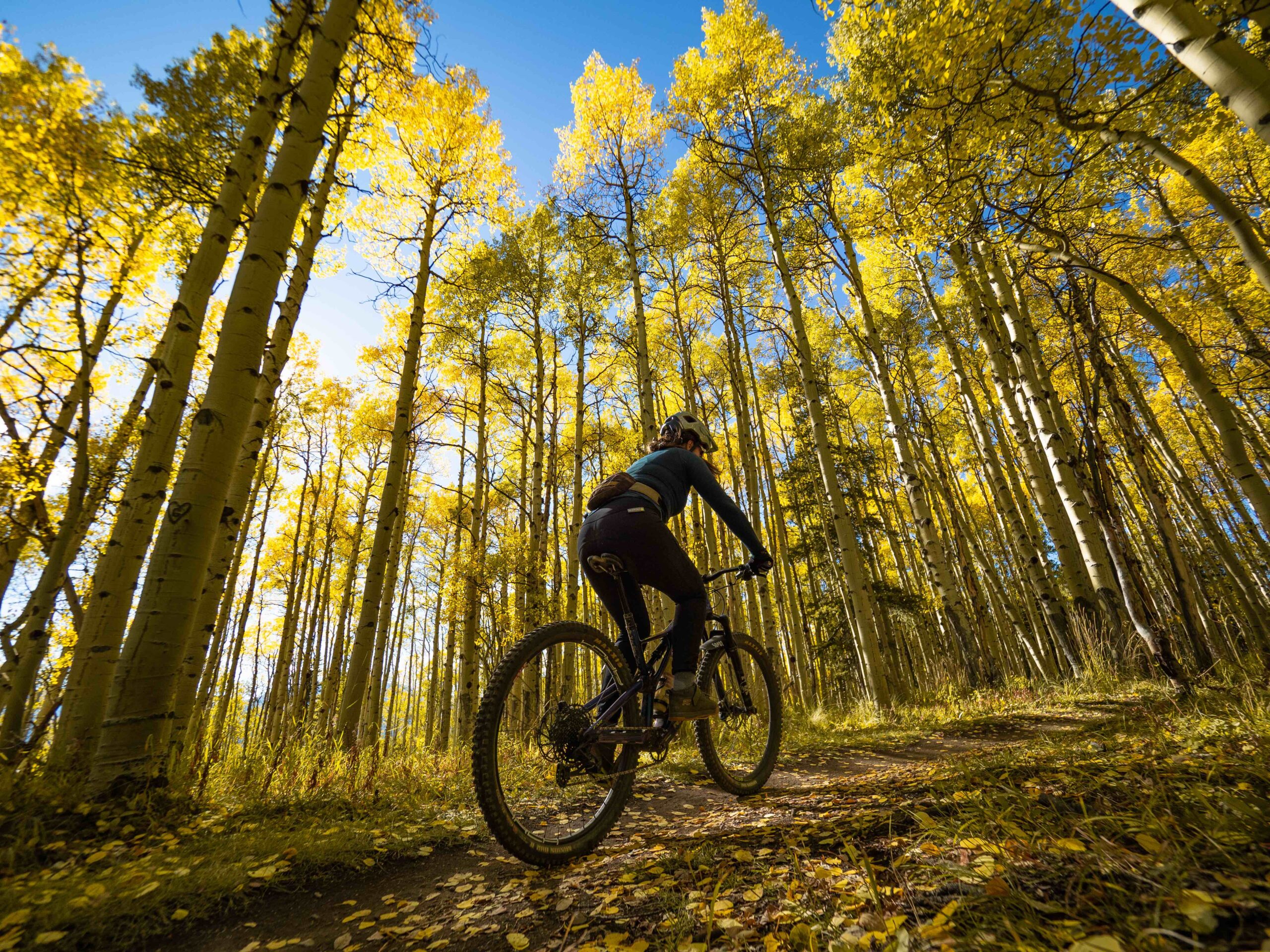
Features and Construction
The Wildcat is a mid-top shoe with padded ankle protection. It is built with a lace system and velcro upper strap to snug up the instep and secure the laces. While the Wildcat is definitely on the heavier and more protective side, it does offer a bit of venting via a lot of perforations along the midfoot and on top of the toes. The velcro strap makes for easy securing through the ankle, in addition to an elastic lace tuck that helps to get the laces out of the way.
The Wildcat is built with Ride Concepts’ Max Grip rubber outsole, which has proven to be plenty grippy with most of the flat pedals I use, but not as grippy off the bike as I would sometimes hope for (more on that below). Overall, the sole and insole offer a pretty stiff, responsive connection to the pedal, though it isn’t the absolute stiffest shoe out there.
Riding around Crested Butte is infamous for stream crossings, and while the Wildcat isn’t the quickest-drying shoe, I have been pretty surprised by its ability to both keep water out and shed water when it does get submerged. The gusseted tongue does a good job of keeping debris out, in addition to making it harder for water to really get in. The only instances where the Wildcat was thoroughly soaked were after full submersion when attempting to pedal through a really deep stream. It also proved pretty water-resistant on some rainier rides this summer.
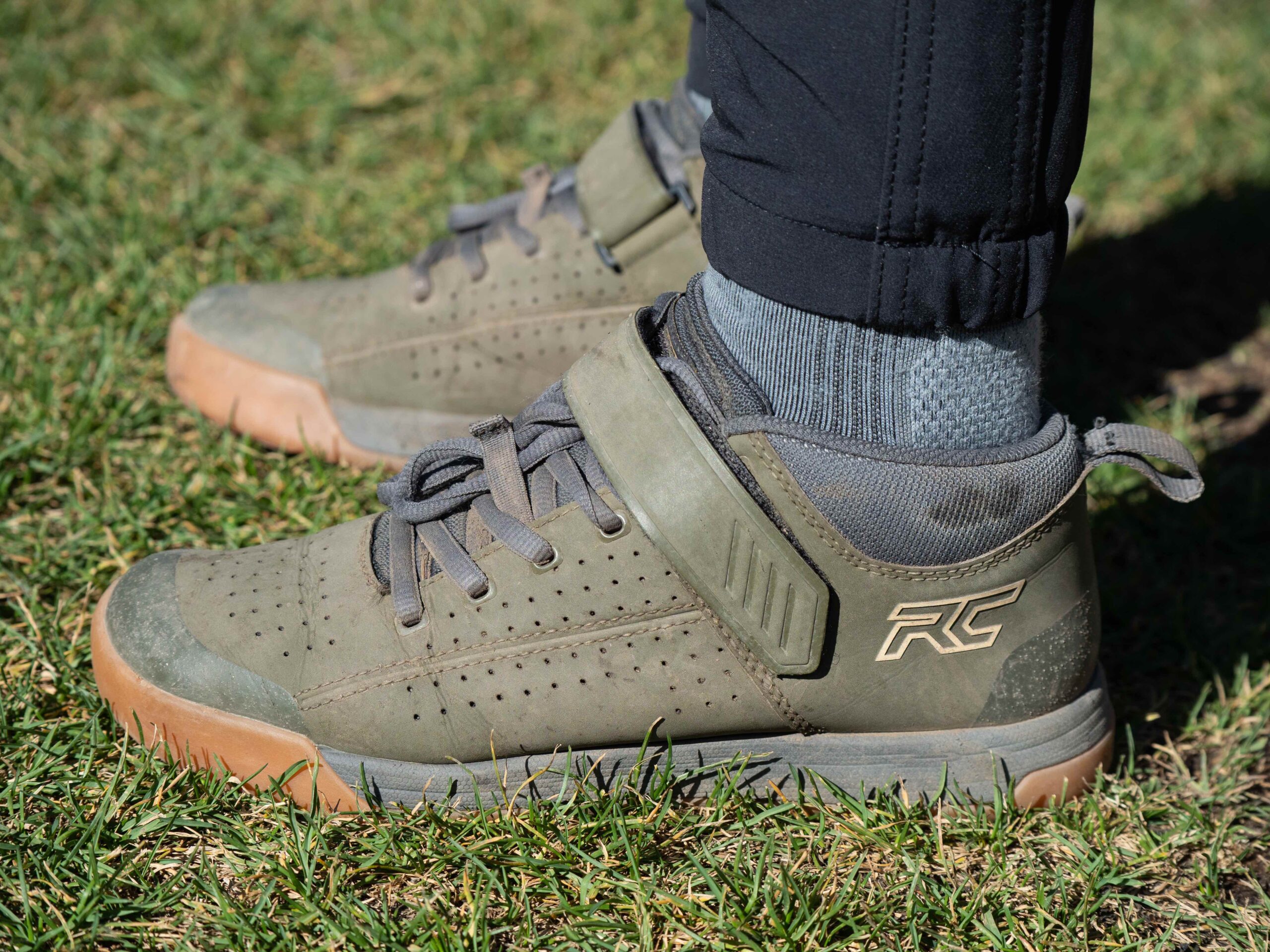
Weight
The Wildcat is not the lightest shoe, and it is notably heavier than the other shoes I have been spending time in this summer, but for a pretty burly mid-top shoe, its weight isn’t unreasonable, either. It is also a bit surprising how close the weight of the Ride Concepts Flume BOA is to the Wildcat, considering how much more padding and protection the Wildcat offers by comparison. For reference, here are some stated and measured weights for several flat-pedal shoes:
Giro Women’s Latch (size 39, stated weight): 300 g
Five Ten Freeride Pro (size 39, stated weight): 317 g
Giro Women’s Deed Shoe (size 39, stated weight): 351 g
Ride Concepts Flume BOA (women’s 9): 369 & 374 g
Ride Concepts Wildcat (women’s 9): 370 & 375 g
Specialized 2FO Roost Flat (size 42, stated weight): 360 g
Fit
Ride Concepts calls Wildcat’s fit low-volume, and says that the women’s Wildcat features a women-specific fit. RC’s strategy for building a women-specific shoe was to alter the fit of the heel cup to be more tailored, in addition to stating that it offers a softer flex and “optimized padding in toe and collar.” Ride Concepts also mentions that the men’s Wildcat is built with a slightly wider toe-box.
While I can’t attest to all of this, having not compared the men’s version, I do find the heel fit of the Wildcat to be nice and snug, with very little slippage, even when I hadn’t laced it very tight. Aside from that, I would definitely agree that the WildCat is a low-volume fit, though not as low-volume as the Ride Concepts Flume Boa.

It has actually been quite surprising how differently the Wildcat fits compared to the Ride Concepts Flume BOA, which I have been testing simultaneously. The Wildcat is wider and longer in the same size as the Flume, with a noticeably roomier fit, particularly in the toe box. In this instance, the fit of the Wildcat worked a lot better for me, despite the fact that I have a pretty narrow, low-volume foot, which sums up the fact that I think the Flume runs a bit on the small side, whereas the Wildcat is true to size.
[Editor’s note: we’ve found a lot of different models of Ride Concepts shoes to fit pretty differently over the years, so Kara’s experience here definitely tracks. As always, it’s best to try on shoes before buying if you can, and don’t write off Ride Concepts across the board if one model doesn’t fit great, and vice-versa.]
The Wildcat is a traditionally laced shoe, and the laces do a decent job of evenly securing the midfoot and forefoot, while still providing the option for finetuning and loosening over certain areas. For someone with a higher-volume foot, or more particularly, a high instep, I can imagine that the Wildcat could be a difficult shoe to put on. It takes a lot of loosening of the laces for me to slip it on, and even then, I often find myself compressing the heel area trying to slide it on. In fact, the only damage I have done to the shoe is yanking the heel-tab a little too much and causing a small rip while putting on the Wildcat.
For someone who prefers a shoe that is quick on and off, the Wildcat is definitely not the easiest. But for someone looking for a protective mid-top shoe that will hold the foot securely while hiking, the Wildcat is a great option, if the lower-volume fit works for your foot.
On the Bike
While riding, the Wildcat does an excellent job of offering support atop the pedals, as well as substantial grip on the pedals without tipping into the “too grippy” side of the spectrum, at least for my preferences. I always felt pretty secure on the pedals, but if I needed to adjust my foot position slightly, it wasn’t hard to make these minor movements. This strikes me as the right balance of grippy, but not too grippy. While there were moments where I felt like my Five Ten Freeriders would probably feel a little more stuck on the pedals, especially on wet rides, I was overall quite pleased with the grip of the Wildcat.
On longer rides, I found the Wildcat to feet solid and responsive without being excessively stiff. They’ve been comfortable for full days of pedaling and have not caused me any foot fatigue in ways I have experienced with other shoes with softer, less-supportive soles.
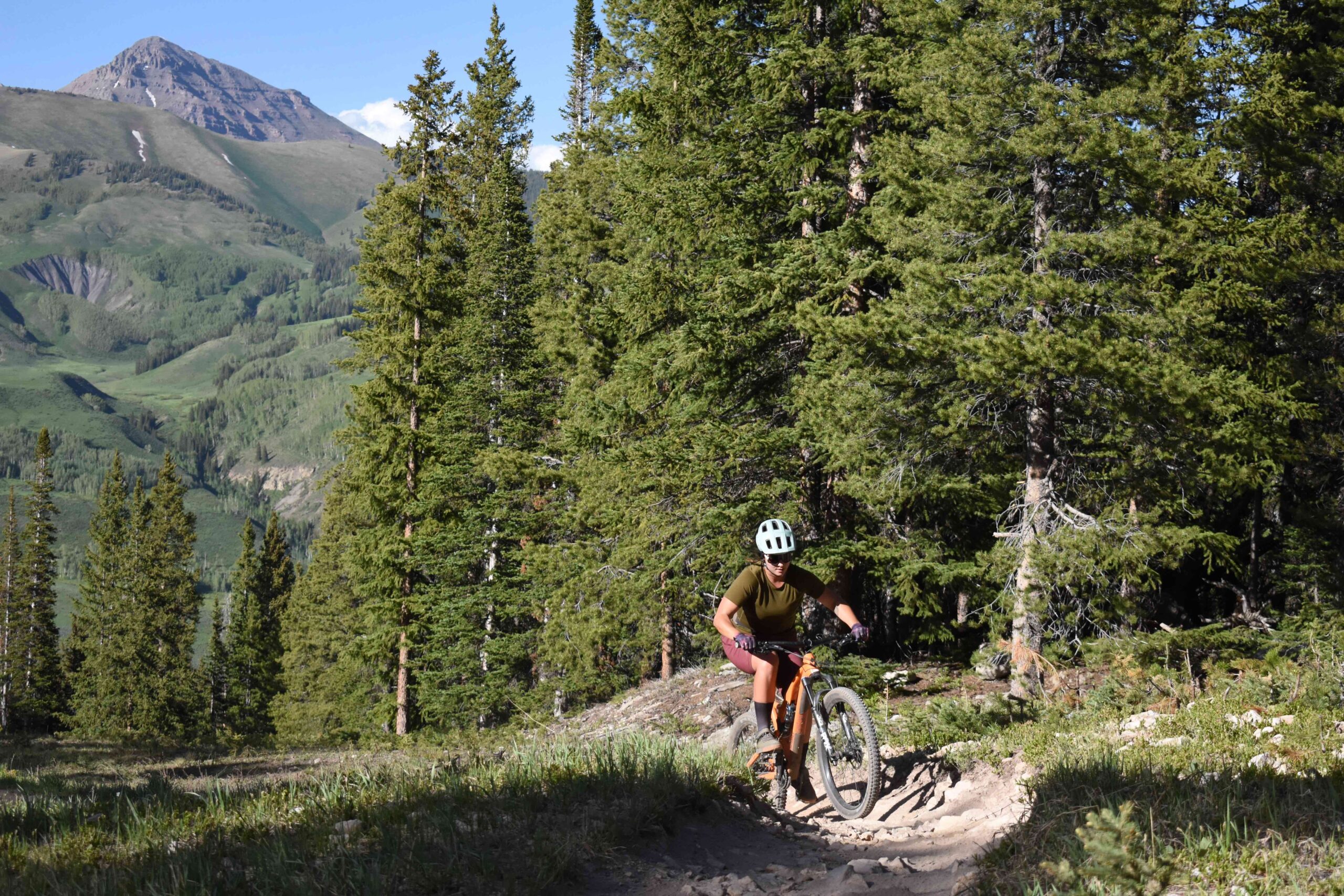
I spent the majority of my time in the Wildcat with a custom insole I have specifically for biking shoes, which helps not only to retain my foot in a shorter configuration (providing more toe space) but also helps to provide more connection and support through the sole. Overall, I felt this enhanced the connection between my foot and the pedals, especially beneath my arch where I tend to feel lots of fatigue when riding without support. That said, the D30 stock insole isn’t terrible as far as stock insoles go (in case it’s not clear, I’m a big fan of custom insoles for most footwear). But the stock insole helps add some stiffness to the overall profile of the shoe, and while it’s no match for my really high arch, I think it will work for many people, particularly those used to stock insoles.
[Editor’s Note: our reviewers who don’t typically run custom insoles are big fans of Ride Concepts D3O ones, primarily for their slight bit of added damping / vibration absorption.]
I found the Wildcat to be a pretty well-cushioned shoe, capable of absorbing a lot of vibration and helping with overall foot fatigue on longer rides. While there are stiffer shoes out there, the Wildcat is comfortable for walking while feeling plenty stiff through the midsole on the pedals to prevent foot fatigue. For longer rides, I have found the Wildcat to be a better option than the 5.10 Freerider, due to the Wildcat’s stiffer and more damped midsole (3+ hours being my qualifier as a longer ride).
Off the Bike
In full honesty, I tend to walk my bike a lot, especially through some of the gnarlier and techier sections around Crested Butte, and I also tend to select rides that just include a lot of hike-a-biking. So walking comfort in bike shoes is important to me. While the Wildcat is on the burlier and heavy side and certainly more ideal when on the pedals than off them, I have still found it to be surprisingly comfortable and reasonable for off-bike time. The Wildcat is a good shoe for quick hikes, and it feels secure enough both in terms of fit and grip to manage most instances where I am off the bike.
The Max Grip rubber compound, featured in both the Wildcat and the Flume BOA, provides decent traction on most trail conditions, but it also does a surprisingly poor job of gripping onto wet rocks, or rocks with sand and gravel on top. I believe that this is in part due to the stiff sole making it difficult for the shoe to conform to uneven ground, but in part, the rubber seems slightly less grippy than what I am accustomed to with the Five Ten Freerider. It rained just about every other day this summer, and there were a lot of times when I felt myself not really trusting the grip of the Wildcat when I was hiking, and I mostly found the issue to occur on sandy, wet rocks, or just any climbing on rocks at all. Overall, I found the Wildcat to offer slightly better grip than the Flume BOA when the conditions were challenging, but the difference has been pretty minor.
While this isn’t the biggest issue, I have slipped out a couple of times in the Wildcat, so it’s worth paying attention to. Overall, the Five Ten Freerider makes for a better rock climbing shoe, while the Wildcat is fine for walking in most conditions, but a little less confidence-inspiring on rocks or really slick conditions.
Durability
After a few hundred miles in the shoe, the Wildcat has proven quite robust and durable, and I have been impressed by how well the Wildcat is still performing (and just looking) after a lot of long, muddy, and wet rides.
The synthetic upper is plenty protective against rocks and has held up very well. While I have definitely beat up the shoe and logged a lot of miles in it (400 or so), it has proven abrasion resistant and is actually really difficult to scuff. That said, I did set the Wildcat out in the sun to dry after a really wet ride, and this did cause a bit of shrinking to the entire clog, so I would deter against soaking and drying the shoe repeatedly (drying it more slowly in a shaded place might help prevent shrinkage).
In line with the number of wet rides and stream crossings this summer, I have also noticed a bit of a smell, more than some lighter, more breathable shoes, such as the Flume BOA or Five Ten Freerider. Aside from the aforementioned yanking of the heel collar that resulted in a tiny rip, the Wildcat still looks in almost immaculate shape considering the adventures it has had.
As far as long-term traction on the sole, Ride Concepts Max Grip rubber is on the softer side, but doesn’t seem to get eaten by my pedals as quickly as Five Ten’s Stealth rubber.
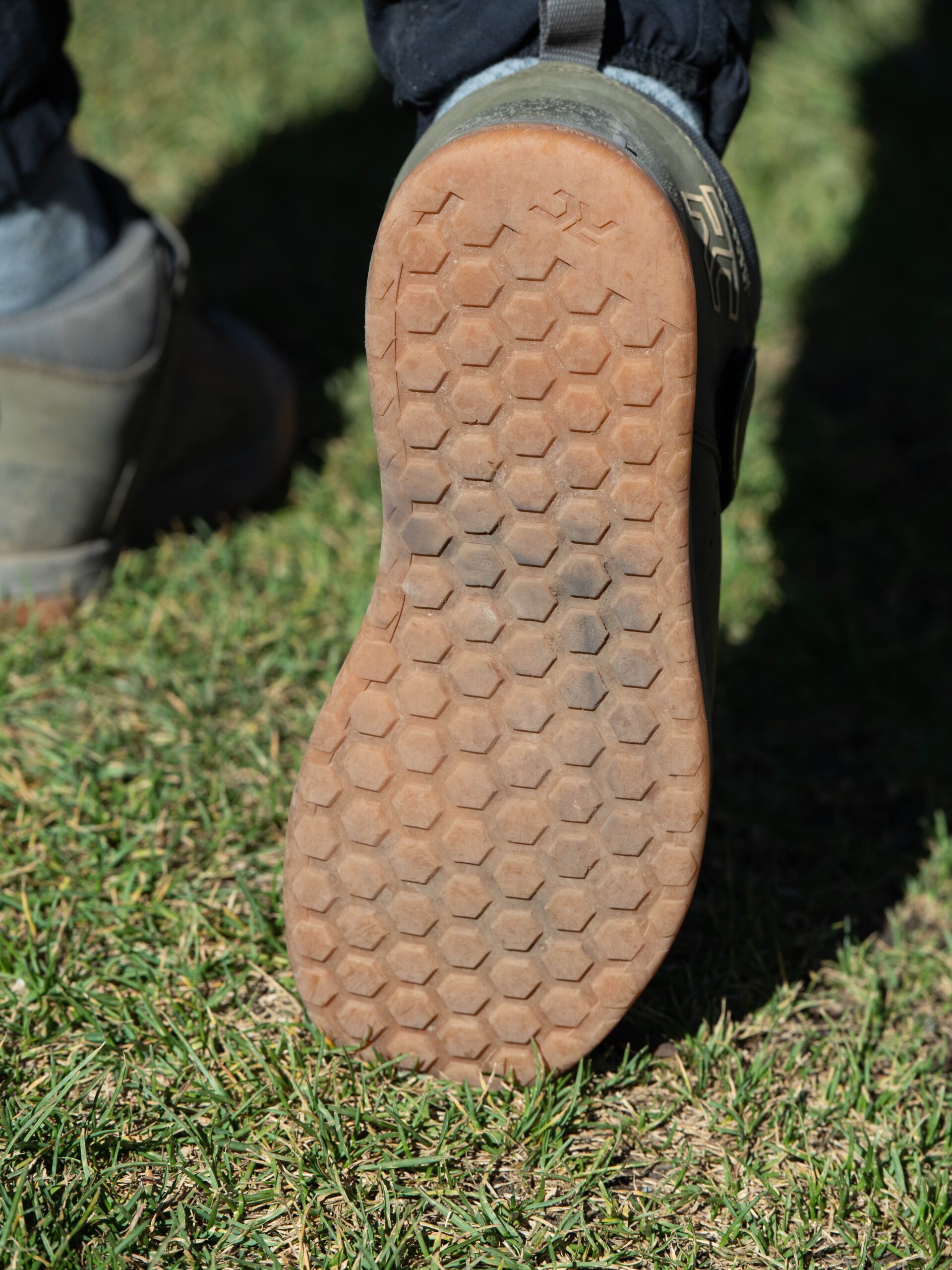
Bottom Line
With the Wildcat, Ride Concepts has designed a versatile mid-top shoe for those seeking protection, durability, and good on-bike performance. While there are lighter, more breathable, and slightly grippier shoes, the Wildcat does an impressive job of doing a lot of things well, while maintaining the most important features of a mid-top, flat shoe. Those with a higher-volume foot might struggle with its lower-volume fit, but the Wildcat works great for balancing on- and off-bike performance, with good walkability, nice on-pedal support, and solid traction.

I just bought the 2023 Wildcats in the same size as the 2021s, which are due for a replacement. They are definitely smaller in length and tighter in the toe-bed all around.
The material is also different. It’s very cheap looking PVC now.